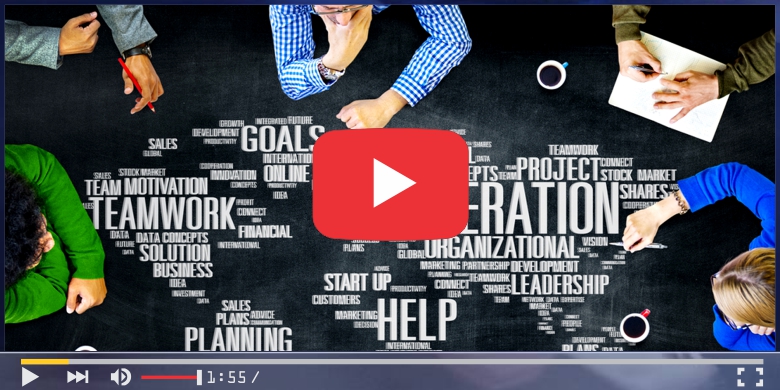"Every company’s biggest problem is communication,” says Scott McGohan." Read on to discover some solutions.
“It really doesn't matter how many times you do it,” says Scott. “If you do any of it, then you have a problem. If you do a lot of it, it's still going to be the number one problem.”
It’s a lesson he learned at an early age from his father, Pat McGohan, who started the business more than 45 years ago. “Growing up in the business and hearing from my father that the number one problem every business has is communication, I believed it,” says Scott. Over the years, he also saw it first-hand.
Here are 4 key ways to become more conscious and mindful about effective workplace communication.
1. Let employees do it on their time
Scott learned the most powerful way to communicate is to deliver content in a way that employees can consume it on their own time. “From a leadership standpoint, it's understanding that we have to recognize that our people aren't available to learn from us on our time. We have to figure out how to do that on their time,” he says.
Envision different channels you can use to deliver stories to employees in a way they will embrace.
For example, McGohan Brabender has a podcast they create in-house and they have a YouTube Channel. McGohan Brabender has learned that the podcasts are popular with employees since they can listen to it on-demand, whenever they have time.
“Some people like to see things, some people like to hear things, some people like to touch things,” says Scott. As a leader, your vision is to get people to feel things.
Right now, Scott focuses on trying to be short, simple, and sweet with content. “We’re embracing the fact that a lot of people today want to learn via their eyes and ears, in probably less than two minute snips. Any longer than that, we lose people's attention.”
2. Stick with it
McGohan Brabender has monthly meetings with all employees. “We look at: Where did we win? Where did we lose? Where are we at? How are we performing?” says Scott. It’s a meeting that encourages transparency and connection between employees.
They also have quarterly employee luncheons. “We'll invite the whole company in, and we'll have lunch. They can bring their kids, they can bring guests, and we've even had parents there.” Over lunch, they also talk about how the organization is doing, how they are performing, and where there is opportunity.
Another way Scott feels the pulse of the organization is through a weekly blog. He’s published the internal blog for more than 5 years.
Whatever a leader decides to do in terms of communication, the most important part is consistency. “If you say to your employees you are going to write a weekly blog, you have to it every week. You can’t miss. Our blog is five years in the running and it shoots out every week,” explains Scott. “Be consistent and be on time.”
3. Use affirmations
“Affirmation is probably the one thing that everybody desires,” says Scott. Scott’s learned to be intentional about how he uses affirmations to his people. In doing so, he’s able to energize and inspire his people.
“ As a leader, when you're telling stories about people in your organization, it affirms the great work they are doing. The magic happens when it inspires other people to want to be a part of a story,” says Scott.
“They hear what others are doing, and they want to be a part of that story. They want to have a chapter written about them. There’s magic in that—that’s what storytelling does.”
4. Show vulnerability
As a leader, have the kind of self-awareness that allows you to show vulnerability through your communication.
“Some may think if you are vulnerable, you’re looked upon as weak,” says Scott. “Vulnerability is a sign of strength. It lets people know they are not alone.”
Find a channel or format of communication that allows you to authentically open up with your people. “For example, for a lot of people, there's an uncanny way for people to be vulnerable in writing versus face-to-face with people. It is an opportunity for leaders to talk about areas in their life where they're vulnerable, or maybe where they're afraid,” says Scott.
“And it lets other people know that you might just be human. You might be just like them.”
When you get vulnerable, your people will respond with trust and openness, too. The result is a culture where employees experiment, take risks, and drive innovation.
Source: Forbes / Written By: Aileron



